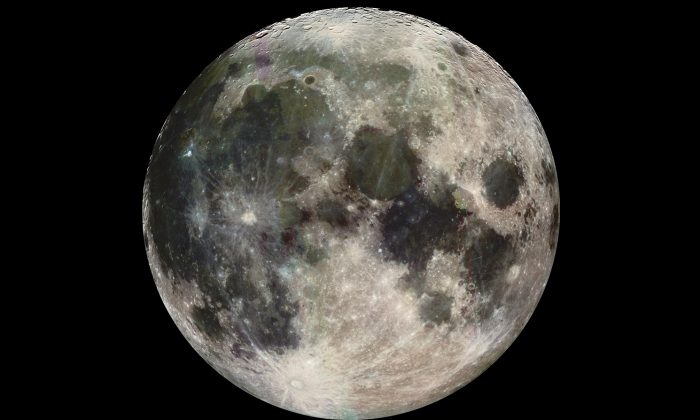Ice has been confirmed at the poles on the Moon, according to the United States space agency.
NASA said that the data from its Moon Mineralogy Mapper confirmed the discovery. The mapper was transported to the Moon by the Indian Space Research Organization’s Chandrayaan-1 spacecraft.
The research was published in the Proceedings of the National Academy of Sciences of the United States of America, titled “Direct evidence of surface exposed water ice in the lunar polar regions.”
“We found direct and definitive evidence for surface-exposed water ice in the lunar polar regions,” the research team stated.
“The abundance and distribution of ice on the Moon are distinct from those on other airless bodies in the inner solar system such as Mercury and Ceres, which may be associated with the unique formation and evolution process of our Moon. These ice deposits might be utilized as an in situ resource in future exploration of the Moon.”

Before the data from the mapper came in, researchers struggled to find direct evidence for water ice on the Moon’s surface.
“Before our work there is no direct evidence to show there is surface exposed water ice on the Moon,” lead author Shuai Li, a planetary scientist at the University of Hawaii in Manoa, told Scientific American. He said many past claims of water on the Moon were actually hydrogen-enriched, bone-dry minerals on the Moon’s surface.
The data indicated that the water ice is trapped and accumulates in regions of the Moon that are permanently shadowed, the researchers added.
“Most of the newfound water ice lies in the shadows of craters near the poles, where the warmest temperatures never reach above minus 250 degrees Fahrenheit. Because of the very small tilt of the Moon’s rotation axis, sunlight never reaches these regions,” NASA’s Jet Propulsion Laboratory stated.
The southern polar region on the Moon has more ice than the northern region because it has more shaded regions.

The researchers said that further research should bring further facts surrounding the ice accumulations to light.
But, NASA noted, the findings show that the water could be utilized by future missions to the Moon.
“With enough ice sitting at the surface—within the top few millimeters—water would possibly be accessible as a resource for future expeditions to explore and even stay on the Moon, and potentially easier to access than the water detected beneath the Moon’s surface,” the space agency stated.
“There’s a need to know if there’s ice on the surface in order to extract it,” Angel Abbud-Madrid, director of the Center for Space Resources at the Colorado School of Mines, added to Business Insider. “This is one more step closer to prospecting the moon and showing how accessible its ice is.”


